Affiliate links on Android Authority may earn us a commission. Learn more.
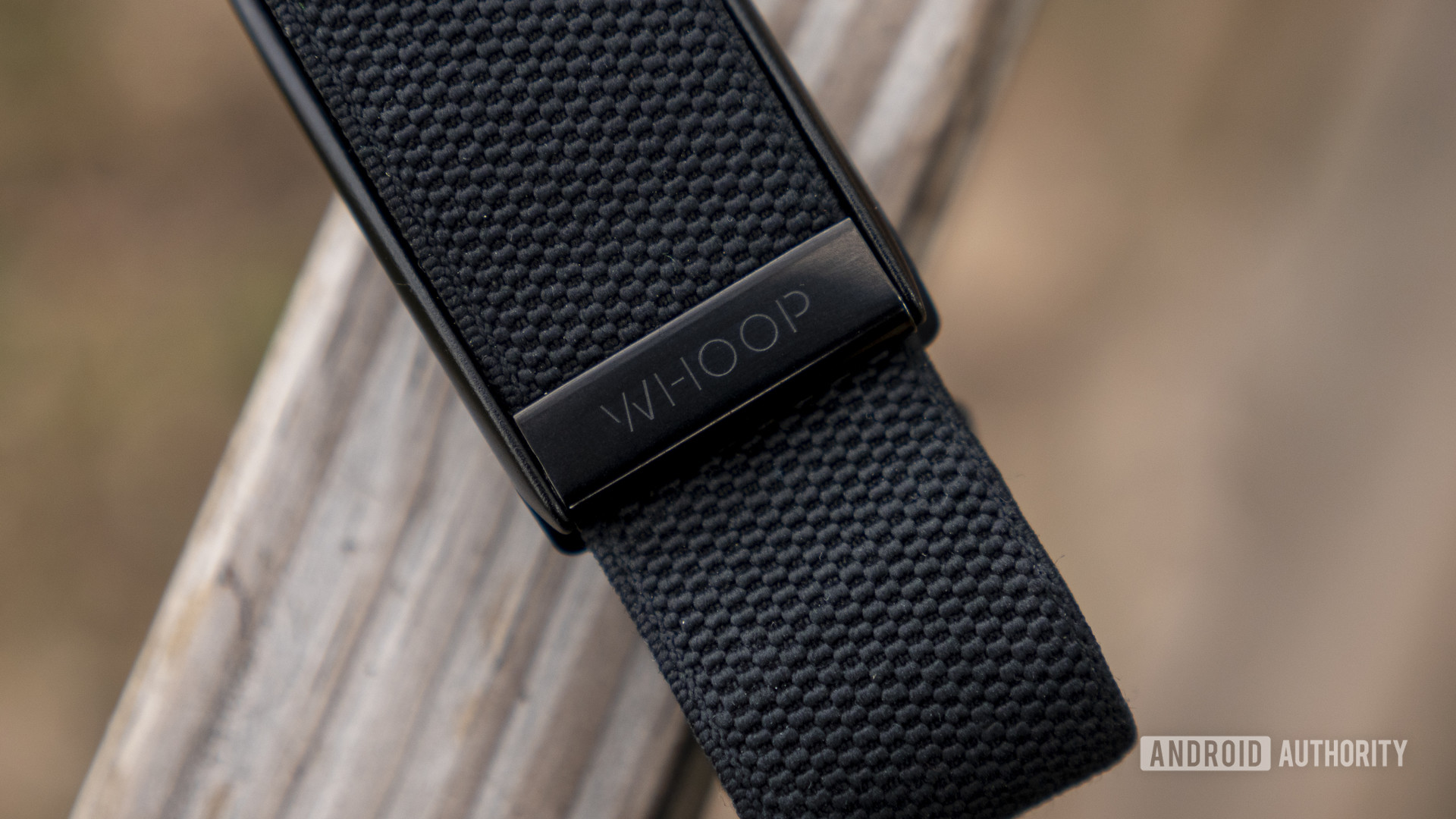
WHOOP Strap 3.0 review: Plenty of problems, so much potential
Published onOctober 29, 2022
WHOOP WHOOP Strap 3.0
What we like
What we don't like
WHOOP WHOOP Strap 3.0
NBA players use it. Professional skateboarders use it. CrossFitters use it. The WHOOP Strap promises to go above and beyond what “normal” fitness trackers can do. You buy a WHOOP Strap if you want to get an idea of how much you should be pushing your performance, and when you should be dialing things back.
I’ve spent over three weeks with the WHOOP Strap 3.0 and I have a pretty good understanding of why it’s so popular among athletes — and why it may not be the training device everyone has been waiting for. This is Android Authority‘s full WHOOP Strap review.
WHOOP Strap review: Pricing and availability
Before getting into the meat of the review, we should talk pricing, as it could potentially turn many people away. While the WHOOP Strap 2.0 went for as high as $500, the WHOOP Strap 3.0 price is based on a subscription model. You pay $30 a month (with a six-month commitment) to access the WHOOP service but you now get the band for free. Basically, you pay $180 upfront and get access to everything for six months. You can save some cash by signing up for a 12-month membership at $288 ($24/month) or an 18-month membership at $324 ($18/month).
It’s an interesting business model to be sure, though there is one major drawback. If you don’t pay the monthly fee, you don’t get access to any of your WHOOP data. Stop paying, and you’ll lose access to the WHOOP service, your training details, and everything else WHOOP has recorded. It’s a big ask, though I’m guessing those interested in WHOOP in the first place will be willing to fork over the high monthly cost.
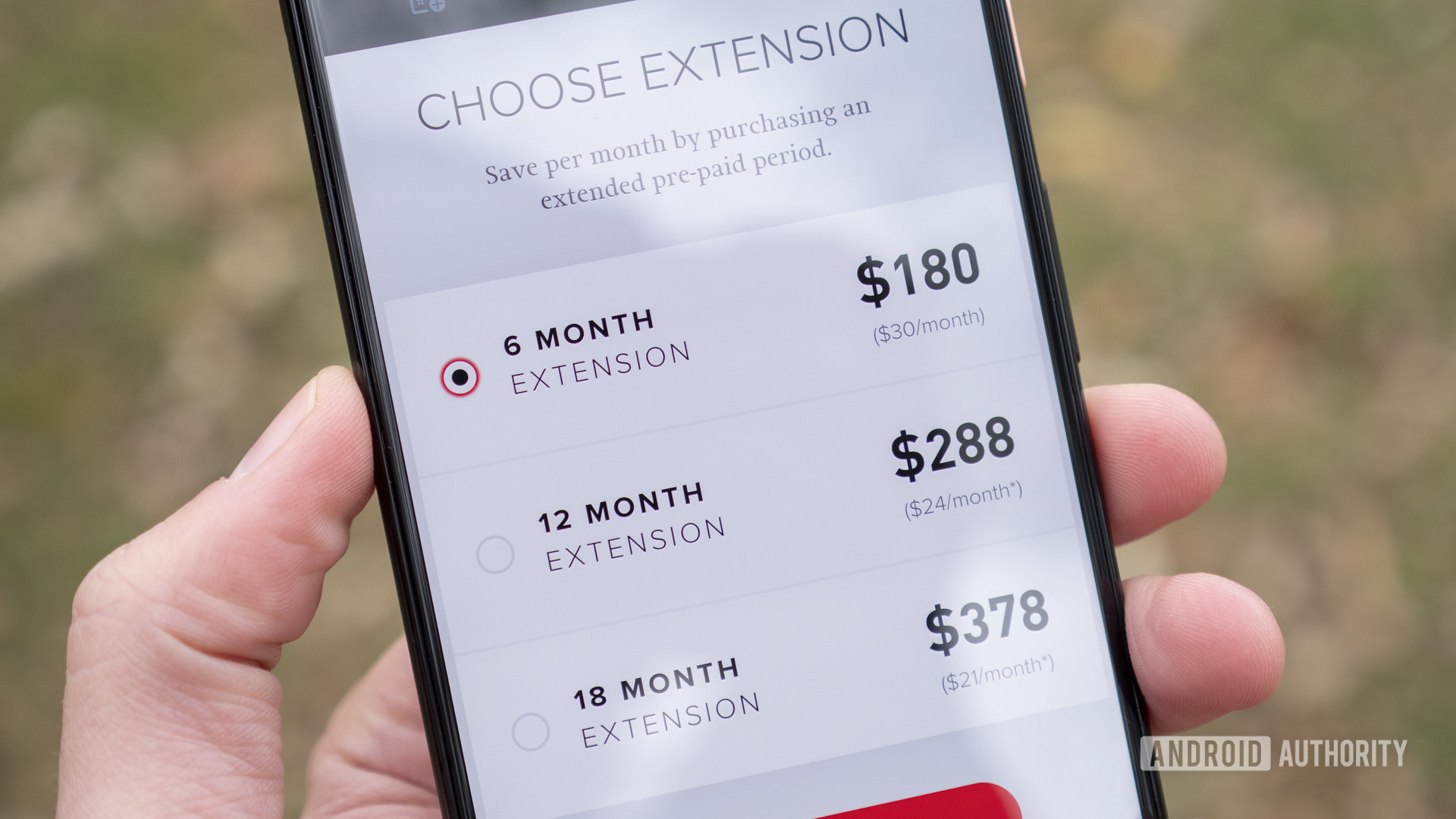
Design and accessories
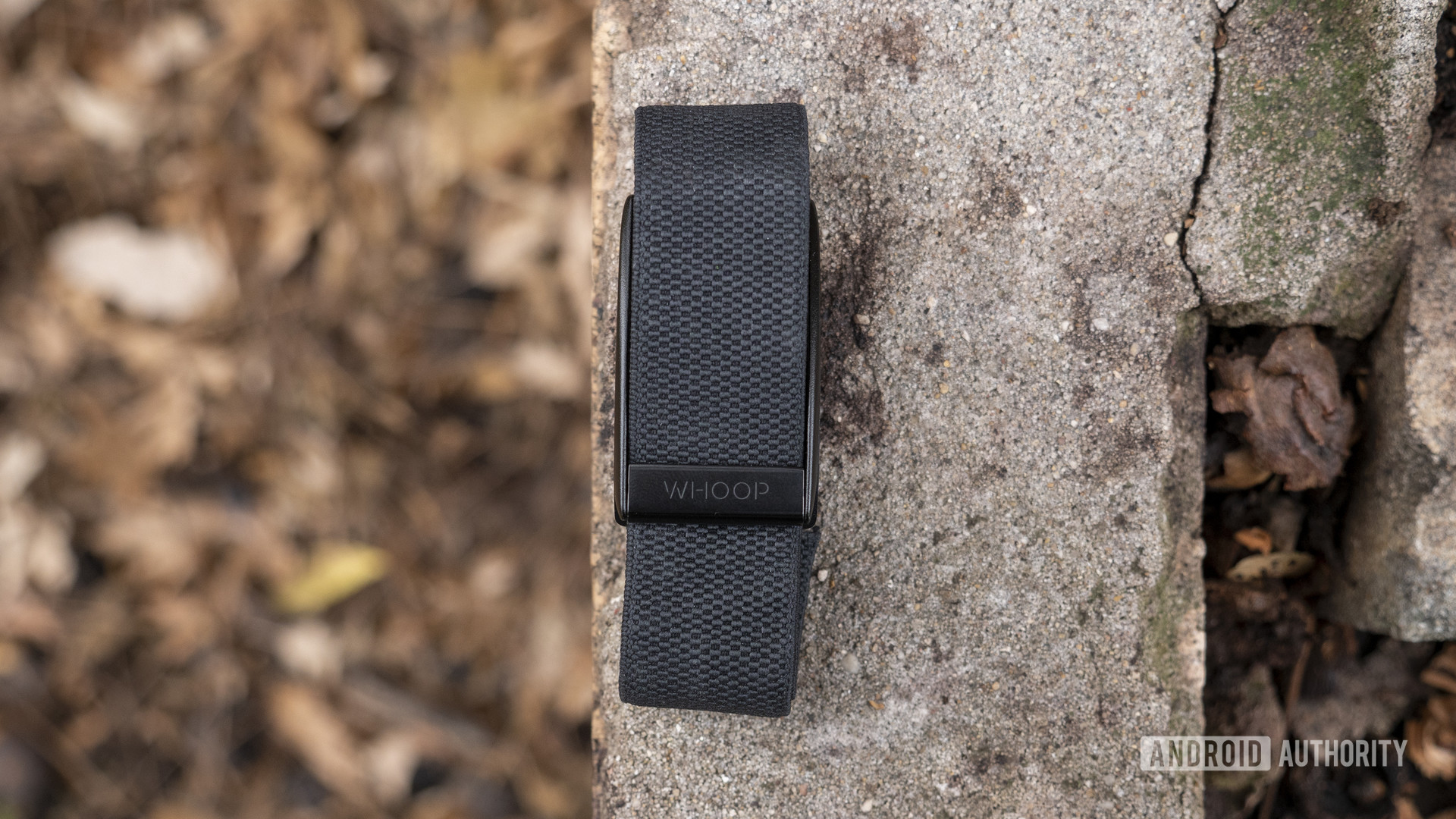
The WHOOP Strap 3.0 is one of the most comfortable wearables I’ve ever worn. It better be, as this tracker is actually designed to be worn at all times. Hardcore WHOOP users even tend to wear the device in the shower.
It doesn’t have a screen, so all of your interaction with the device will need to take place in the WHOOP app. The tracker itself is made of a durable plastic that’s light and fairly scratch resistant. The clasp mechanism could be better. Once it’s on, it’s fine. But taking it off feels like you’re going to rip the thing apart.
The WHOOP Strap 3.0 is one of the most comfortable wearables I've worn.
The included ProKnit strap is stretchy and comfortable to wear all day, and it should fit most wrist sizes. There’s a knitted thread pattern on the bottom that keeps the band secure. I do like the standard Onyx color (black), but you can upgrade to a variety of colorful straps, hooks, and clasps if you want something more flashy. Those will cost you anywhere between $25-$50.
You can also upgrade your ProKnit band to a Hydroband strap, which WHOOP sells for $15. This is a quick-dry strap that’s meant for water sports or everyday wear. I think it should’ve been included by default. If you get the WHOOP Strap 3.0 wet, it’ll take quite a while to dry.
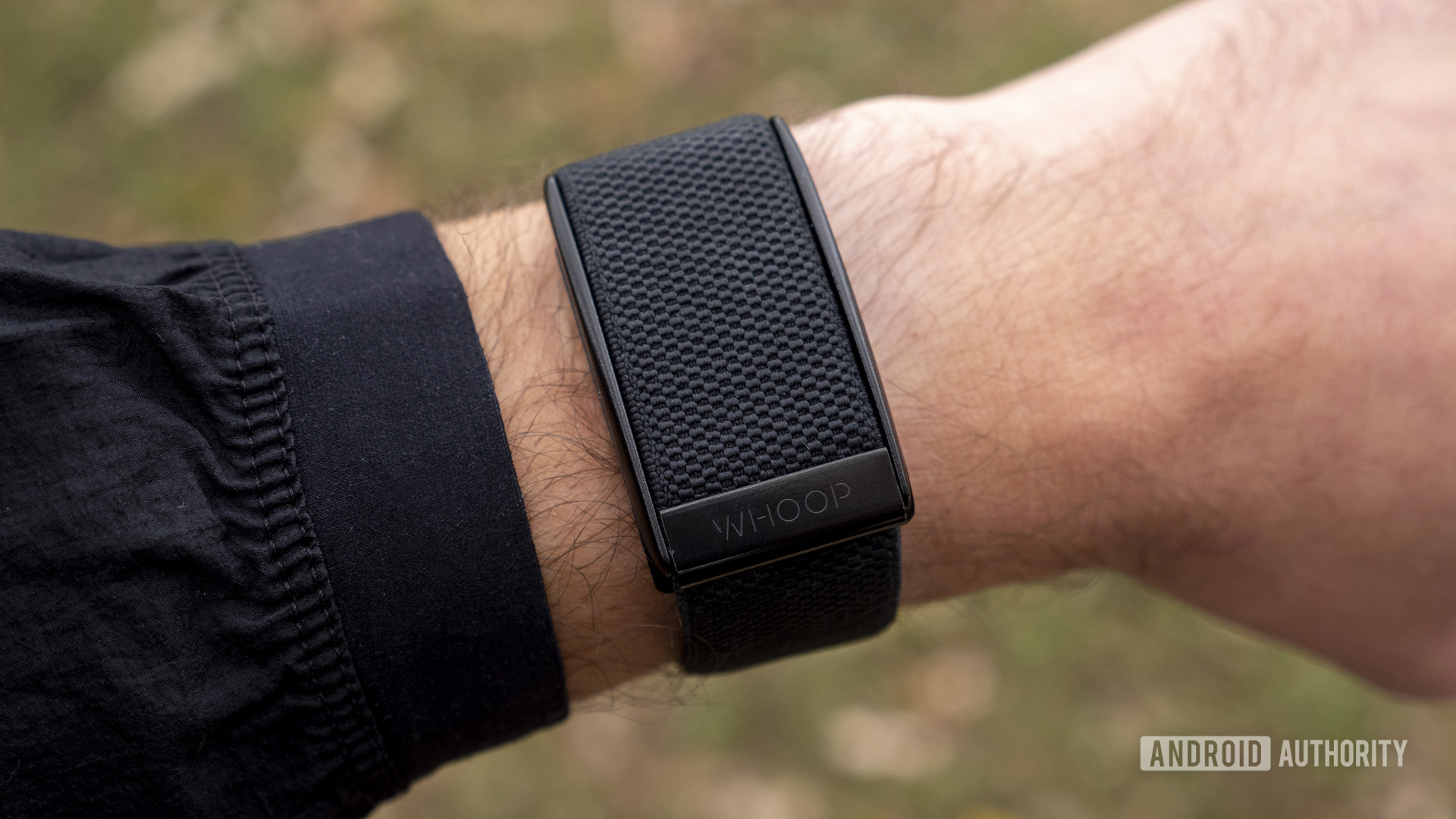
The WHOOP Strap is meant to be worn on the wrist like a traditional fitness tracker, but you can move it up to your forearm or tricep if your arms are small enough. If you’re playing a higher-impact sport like American football, WHOOP will also sell you an upper arm sleeve that resembles a compression sleeve. Slide the tracker inside the sleeve, and it should stay secure on your arm.
So, how does everyone wear the WHOOP Strap 3.0 all day, every day? The included charger lets you charge the strap without the need to remove it from your arm. It’s a pretty cool system. The charger fits over the tracker module like a battery pack. It charges the device directly on your wrist via five pogo pins.
I have some gripes with this charging system, however. While it saves you from taking off the WHOOP Strap for an hour or so, having a battery pack means you need to charge an extra device. Not only do you need to worry about your strap’s charge, but you also need to make sure your battery pack doesn’t run out of juice. I suppose you can keep your battery pack plugged in and charge your strap like you would a normal fitness tracker, but that kind of defeats the purpose of the battery pack aspect of the system.
I also have doubts the hardware will last over time. For one, the small microUSB cable that shipped with my unit already broke. It doesn’t charge anymore. The battery pack itself feels cheap and doesn’t offer a satisfying click into place while it’s charging the tracker. If I knock the band against a wall or something, I fear the battery pack might go flying off my wrist. Unfortunately, extra battery packs cost $50.
The WHOOP Strap 3.0 lasts about five days on a single charge, up from three days with the WHOOP Strap 2.0. I’d say WHOOP’s claims are accurate. I’ve worn my strap during five days of regular walks, runs, and sleep, and it’s consistently lasted five days. Your mileage may vary depending on how often you exercise.
The WHOOP app
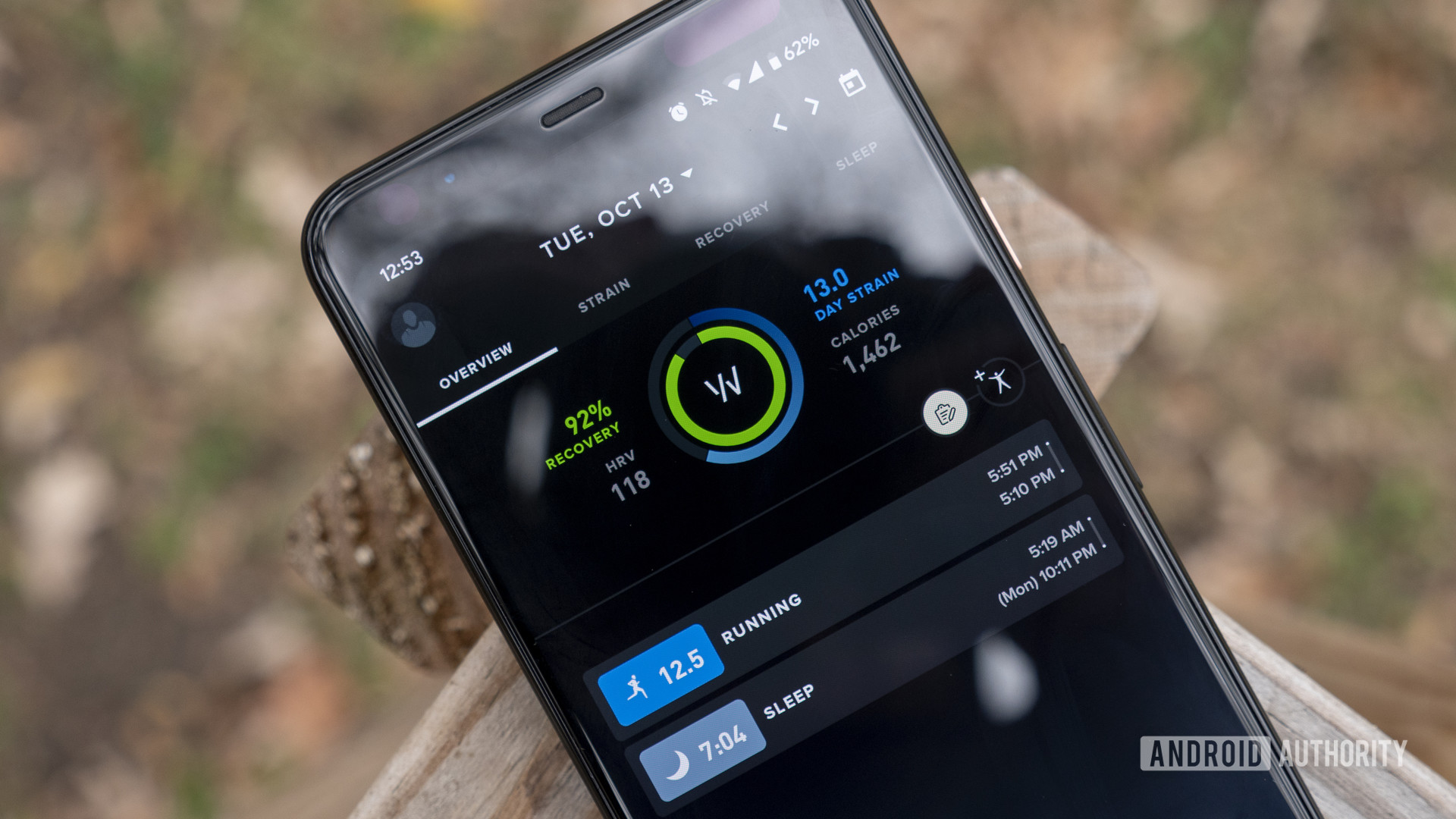
You can access your data in the WHOOP app for Android or iOS, or on WHOOP.com. Both options provide nearly the same results, so which method you use to see your data is up to you.
I’ve found the WHOOP app layout to be confusing. You navigate around by swiping over to different pages, swiping down to view more detailed stats, and digging through different submenus to find what you’re looking for. It makes sense to me now, but only after a few weeks of using it on a regular basis.
Fitness and health tracking
Make no mistake, the WHOOP Strap 3.0 is not your average fitness tracker. In fact, it doesn’t even track your steps. This tracker is designed to help athletes make the most of their training. There are two major facets to WHOOP’s training system: strain and recovery.
The WHOOP Strap 3.0 uses your resting and active heart rate, as well as your heart rate variability (HRV), to determine how much strain you’ve accumulated throughout the day. The goal is to weigh your total strain against your total recovery to judge how intense your next workout should be. The WHOOP Strap will also help you determine how much sleep you’ll need to get to perform your best.
Strain and Strain Coach
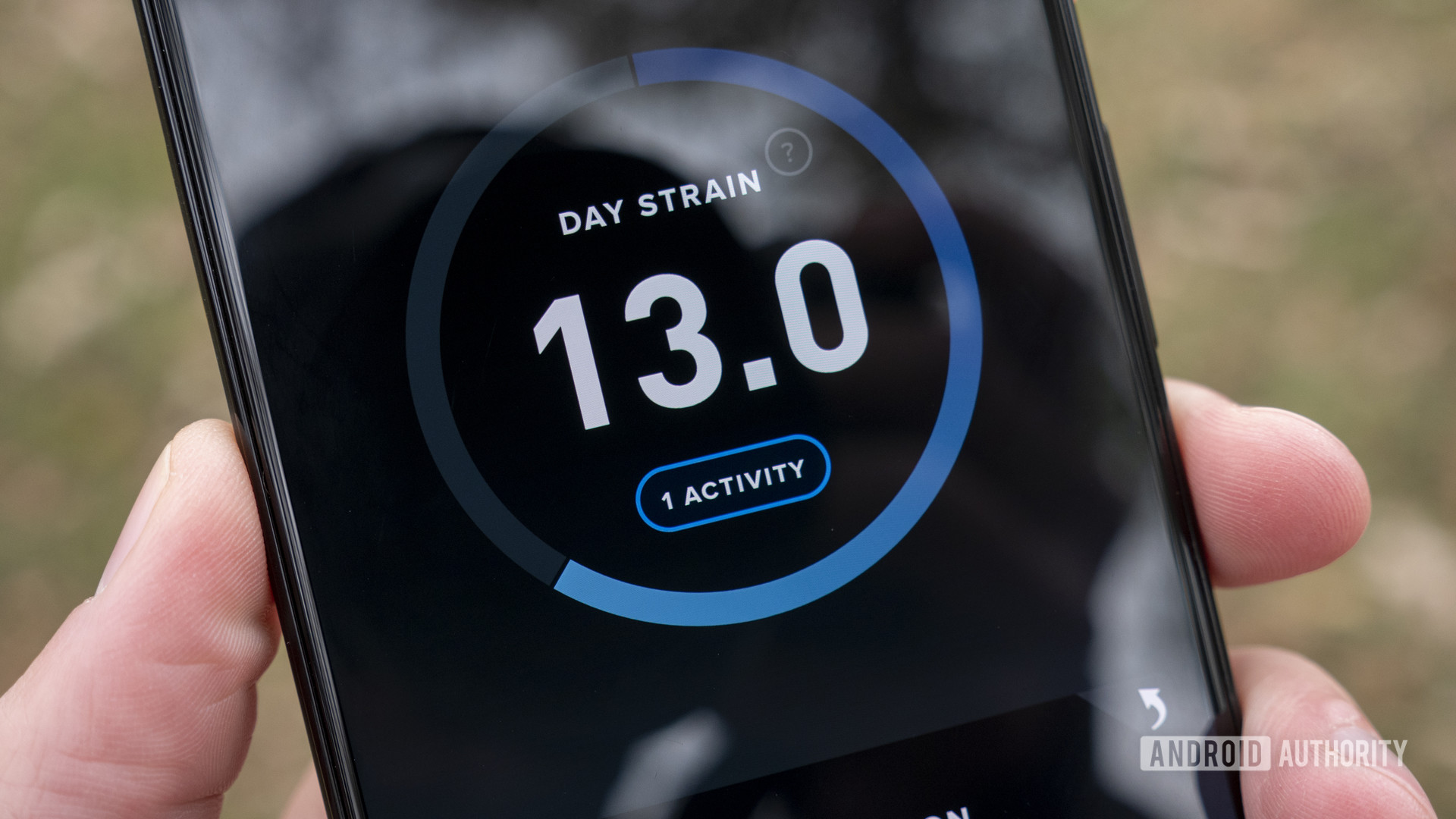
The WHOOP Strap 3.0 uses all your heart rate and recovery data to determine your strain level. It then gives you an exertion level recommendation based on how recovered your body is. If you’ve been working out too hard and not getting enough sleep, your exertion level will be much higher as it’s more difficult to perform under those conditions. If you’ve been exercising moderately and getting plenty of sleep, your exertion level may be lower.
WHOOP measures strain on a 21-point scale. You’ll get a score of 0-9.9 for light workouts, 10-13.9 for moderate, 14-17.9 for strenuous, and 18-21 for intense workouts. Since these scores are based on how hard your body worked — not based on what you did during that activity — scores may vary from person to person. It’s all based on your heart rate data.
Overall, I think WHOOP’s strain score has been reflective of my real-world experience. Running a hard five miles around a hilly neighborhood resulted in a score of 16.6. I was tired, but not too tired. 0-21 is an odd scale, though. The numbers would’ve been easier to digest if it was on a 0-100 scale, like just about every other health score you get with other fitness apps.
Strain Coach is one of the smartest parts of the WHOOP experience. This feature gives you personalized recommendations as to how much strain is optimal for your body at any given time. The goal is to help you perform your very best without reaching the burn-out stage. You need to keep your phone with you to use Strain Coach. You set a target goal and the app will display the strain you accumulate during your workout in real-time.
Put simply, if you want to see how much effort you should put into your next workout to perform optimally, use Strain Coach.
If you feel Strain Coach’s recommendation is too low or too high, you can move the strain number up or down (again, from 0-21) until you find the right number for your upcoming workout. It’s pretty great, actually. Increasing the strain number over the recommended amount will reflect in the recovery graph towards the bottom of the screen. This allows you to see how much you’ll need to recover after your workout.
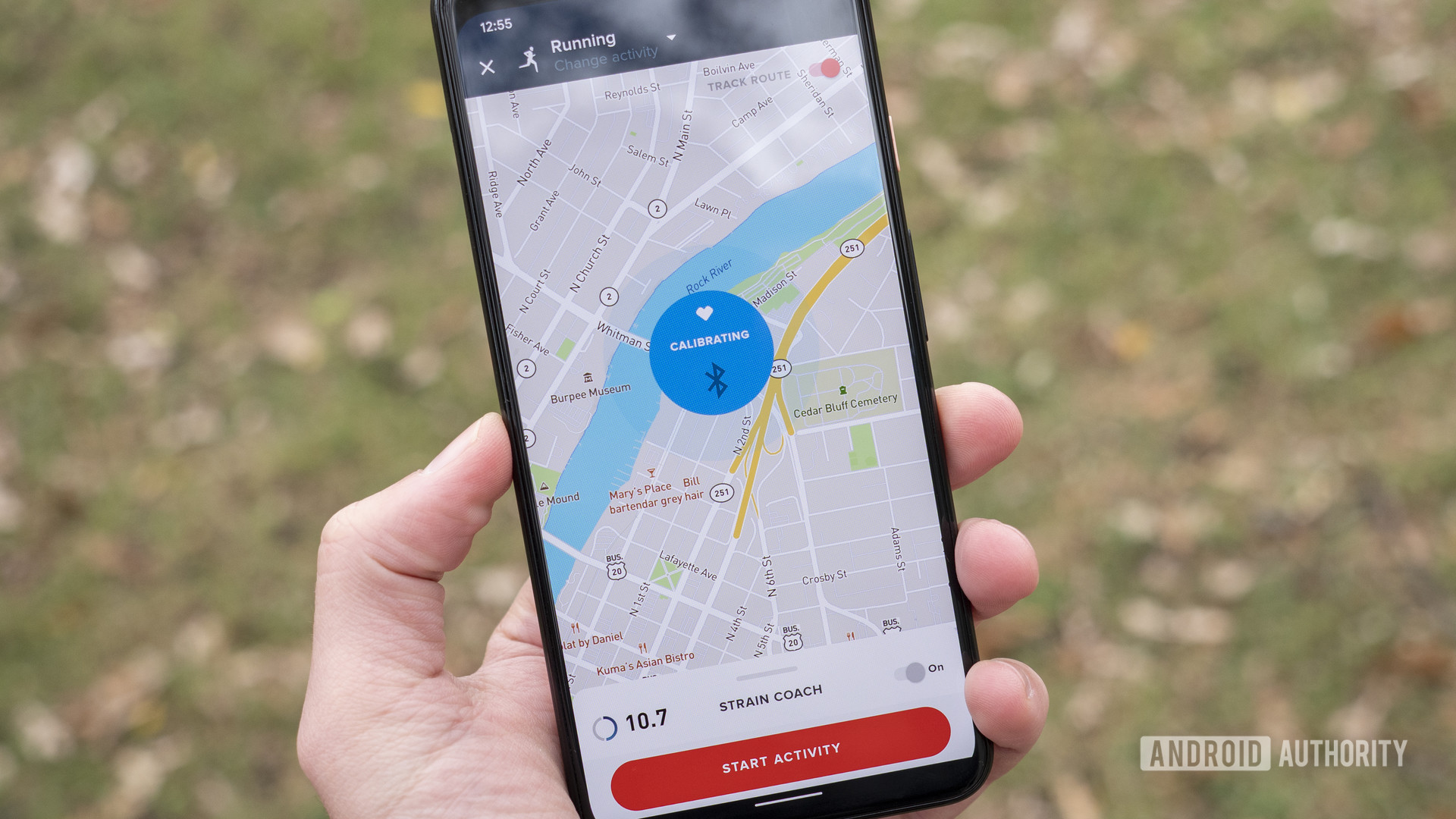
I took the weekend off from exercising, and Strain Coach told me I needed a 10.8 strain level if I were to start exercising again. That’s a fine recommendation, and I think it reflected how much effort I needed to put into my next run. But since you need to keep your phone with you during your exercise to use Strain Coach for its real-time strain accumulation, it’s a cumbersome system for anything that’s not a stationary workout (treadmill, weightlifting, elliptical, etc.). I don’t really want to take my phone with me on my run and monitor my strain level while I’m trying to focus on my workout. This is where the WHOOP Strap could have benefitted from a display.
Once you find your optimal strain level, click the Start Activity button. You’ll see two tabs: activity strain and heart rate. The activity strain screen shows your strain in real-time, as well as your average and max heart rate, and calories burned. The heart rate tab prioritizes your heart rate but still includes your strain number on the bottom of the screen. It’s fascinating to see your strain accumulate in real-time.
After your workout, the WHOOP app will ask you to fill out a Rate of Perceived Exertion (RPE) score. Some people might overlook these short surveys, but they’re crucial for WHOOP to help you train to your fullest extent. You’re asked to simply rate your perceived exertion and to rate your performance level during that activity. If WHOOP’s measurements are consistently off from your own scores, it may reevaluate your training goals within the app.
I should note here that since there are no buttons on the WHOOP Strap 3.0, it automatically detects activities based on periods of elevated heart rate. It’s best to jump into the app and assign a sport profile for your activity right after your workout. There are dozens of activities to choose from and you can tweak each one after it’s saved.
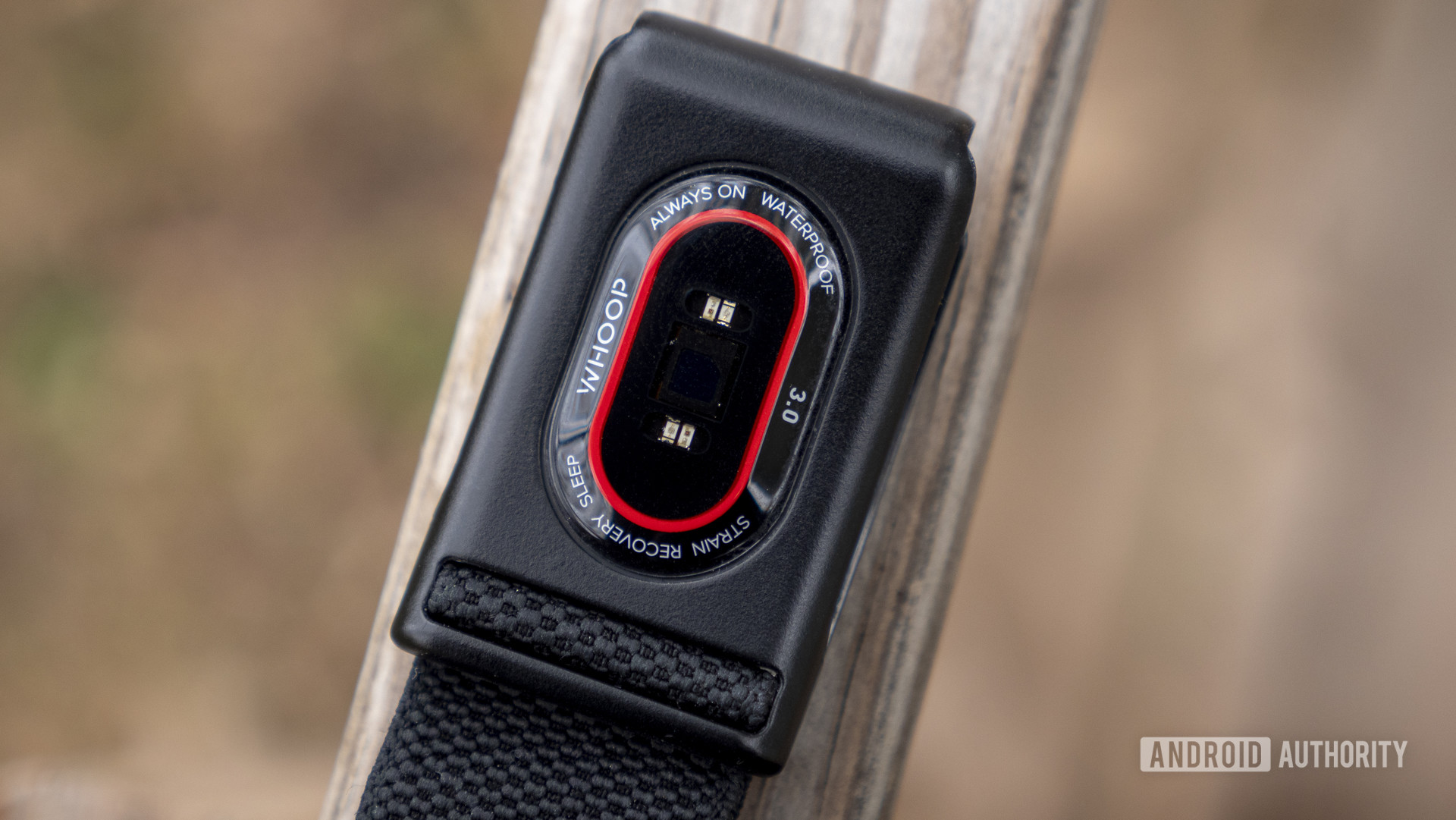
I don’t trust the WHOOP Strap’s heart rate sensor. I’ve found it to be erratic for anything but resting heart rate readings. Below, you can see a snippet of an interval treadmill workout with the WHOOP Strap (purple) and the Wahoo Tickr X chest strap (blue).

I don’t really know how else to put it: the WHOOP Strap’s heart rate monitor is not good. It was really only on the same page as the chest strap for a few select points in the workout, from 12-16 minutes, 21-22 minutes, and 25-28 minutes. Even then, it was inconsistent in its climbs, jolting up and down at random. When it was able to record the quick peaks and valleys (see 5:30-12 minutes), it was still 10-30bpm over what the chest strap reported.
The WHOOP Strap's poor heart rate sensor is concerning, especially when it can't pair to more accurate sensors.
Now is the time I wish the WHOOP Strap 3.0 was able to pair with an external heart rate sensor. Unfortunately, it can’t, so the data that the WHOOP Strap collects is the data you need to work with. And that’s a big problem. Everything the WHOOP Strap tracks is based on heart rate data. If it’s giving you inaccurate information, that raises a flag that recovery, strain, and other data could be inaccurate. It defeats the whole purpose of trusting the device to tell you whether or not to train more intensely or to take a rest.
Resting heart rate data is a similar story. I’ve found the WHOOP Strap was consistently 5-7bpm over my Garmin Fenix 6 Pro and Tickr X.
Sleep tracking and Sleep Coach
We should talk about recovery. It’s the other main reason you’d be interested in the WHOOP Strap 3.0. That all starts with sleep tracking. The WHOOP Strap tracks your sleep stages (light, deep, REM), total time asleep, sleep trends over time, as well as the total time you spent in bed. Detailed overnight heart rate data can be found in the WHOOP app, along with the total number of disturbances you experienced, an efficiency percentage, your respiratory rate, and latency (how long it takes to fall asleep).
In my testing, sleep tracking has been accurate. I compared the WHOOP Strap with the Fitbit Sense over multiple nights and both devices were able to record my sleep schedule at around the same time. Sleep stage timing and duration was a little off between devices, but that’s to be expected.
The WHOOP app will give you a sleep percentage score from 1-100%. Again, it’s odd to go from a 0-21 scale for strain but a 1-100% range for sleep. Anyway, this score is calculated based simply on the total amount of sleep you got versus the total amount of sleep you needed. Sleep too little, and you’ll get a lower percentage.
Below the sleep performance metric, you’ll see a card telling you how well you slept based on the data the strap recorded. One night, I nearly hit my sleep duration target but I woke up at 4 AM to take my dog outside. In the morning, the card told me I had a sufficient but inconsistent night sleep and recommended I aim for more consistent bedtimes.
Sleep Coach is by far my favorite part of the WHOOP Strap. This is the feature that tells you how much sleep you should be getting based on what you’d like to do the next day. If you have a workout scheduled for the next morning, navigate to the Sleep Coach menu and select whether you’d like to get by, perform, or peak tomorrow. Clicking on these three options will change your recommended sleep duration. Furthermore, the app suggests what time you should go to bed and wake up.
You can also set a weekly schedule for each day. If you normally go on long runs on Sunday, for instance, you’ll want to select “peak.” That way it’ll recommend you get plenty of high-quality sleep on Saturday night.
Also read: The best sleep trackers you can buy
I’ve found Sleep Coach’s data to be accurate. Usually, if I want to peak the next day, the app will tell me to get around 8.5-9 hours of sleep. To just get by, I normally only need about 6.5 hours.
The WHOOP Strap also tracks naps, something that’s surprisingly rare on sleep trackers. The cool thing is that if you have a sleep deficiency one night and take a nap during the day, that’ll increase your overall recovery score for the day. However, taking a one-hour nap on, say, Wednesday afternoon will then remove one hour of sleep you need from Wednesday night’s sleep. That doesn’t make much sense to me. Normal people take a nap because they’re tired from last night’s sleep, not because they’re anticipating not having enough sleep the following night. This should only increase your recovery score and not affect your next night’s sleep.
Recovery
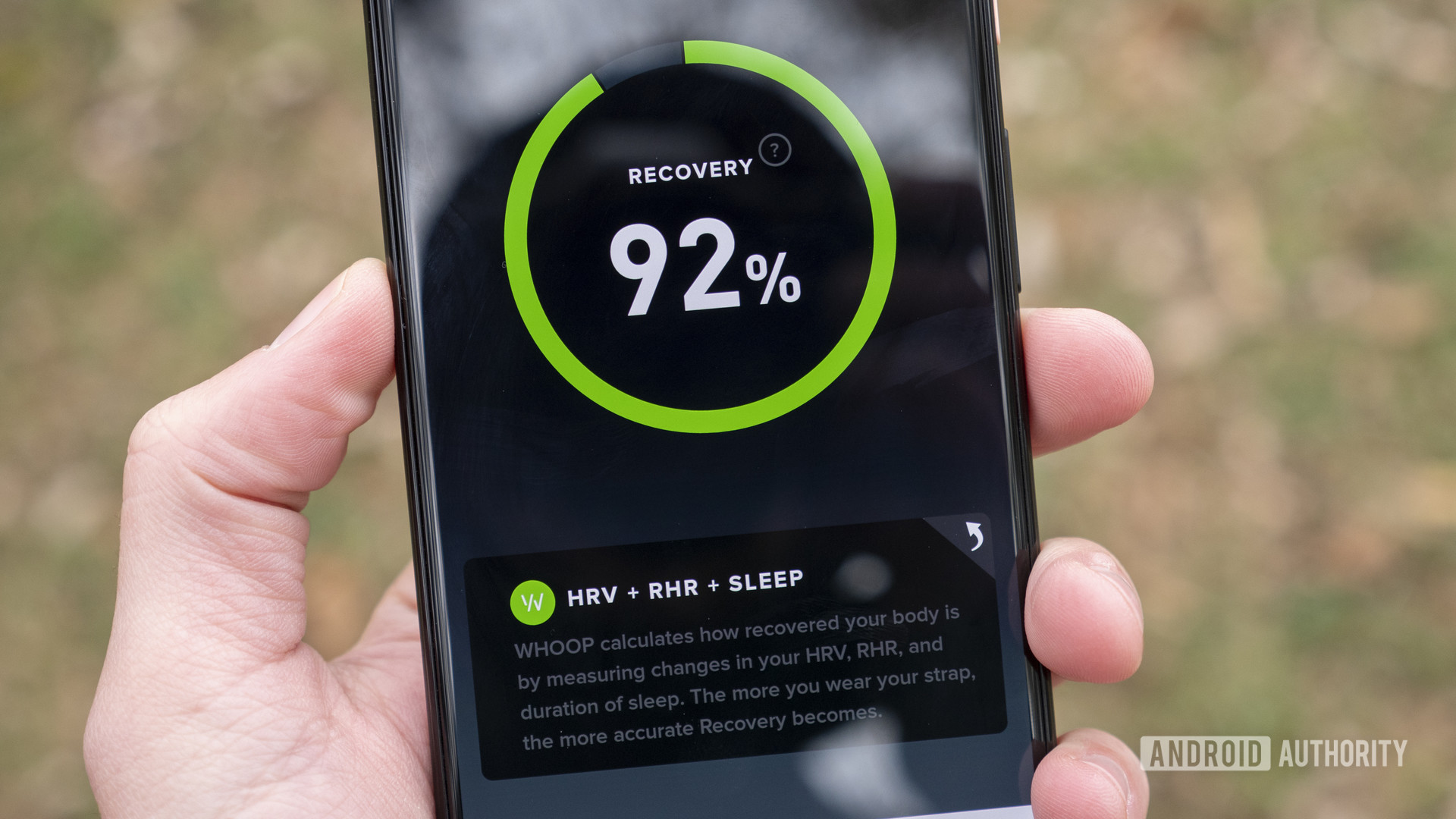
Many factors contribute to your daily recovery level: exercise frequency and intensity, sleep duration and quality, illness, emotional stress, diet, hydration, etc. WHOOP attempts to pinpoint your overall recovery levels so you can decide how much effort you need to put into your next workout, or if you should rest up.
Your daily recovery is shown in a percentage from 0-100% and broken down into three stages: red (run down), yellow (okay to operate), and green (peaking physically). The goal is to get your recovery percentage as high as possible before your next workout. If you’re in the yellow or red, you might want to reconsider going out on that long run.
Recovery percentage is based on your HRV (33%), resting heart rate (33%), and hours of sleep (33%), totaling 100%. Combined, these factors should lead to an estimation of your actual recovery level. For the most part, my recovery percentages have been reflective of my real-world energy levels. However, I noticed a few days where the WHOOP Strap 3.0 was completely off. That weekend I took off from exercising? I actually ended up getting lots of good, quality sleep and I only took brisk walks on Saturday and Sunday. Launching the app Monday morning told me I had only achieved a 48% recovery (yellow), which seemed quite low compared to how I felt.
You should also keep in mind what factors are calculated to give you that recovery percentage. It’s not a be-all-end-all recovery bible. Hydration, nutrition, and other factors that WHOOP doesn’t touch can sway your real-world recovery symptoms. If you’ve been eating junk food and not getting enough water, be careful not to overdo it if WHOOP tells you you’re in the green.
WHOOP attempts to track some of the “extras,” but they aren’t reflected in your recovery or sleep scores. Each morning when you open the WHOOP app, you’ll be asked to fill out your Journal which tells WHOOP about all the extra things that could affect your body. You can input things like alcohol consumption, whether or not you shared your bed, stress levels, whether or not you traveled, and much more. While these factors aren’t reflected in your scores, the data is rounded up at the end of each month in your monthly performance assessment. You can then analyze how each one of those factors affected your performance or sleep. If, for instance, you drank too much multiple weekends in a row, that would affect your sleep performance, which might then affect your early-week long run. It’s pretty cool.
There’s also something to be said about admitting to your fitness tracker that you stayed up in bed staring at your phone or that you drank a little too much the night before.
I do wish these details were available at all times though, or at least a little more frequently than they currently are. They’re only provided in your monthly performance assessment — not your weekly assessment — and it’s not accessible until the PDF is generated at the beginning of each month.
While we’re talking about it, your weekly performance assessment lays out weekly stats on your training state (day strain vs recovery), sleep status (consistency vs performance), and your sleep consistency compared to other people your same sex and age. I’d urge all users to look at this assessment whenever it’s available. It really helps make sense of all the data WHOOP throws at you every day.
WHOOP Strap review: The verdict
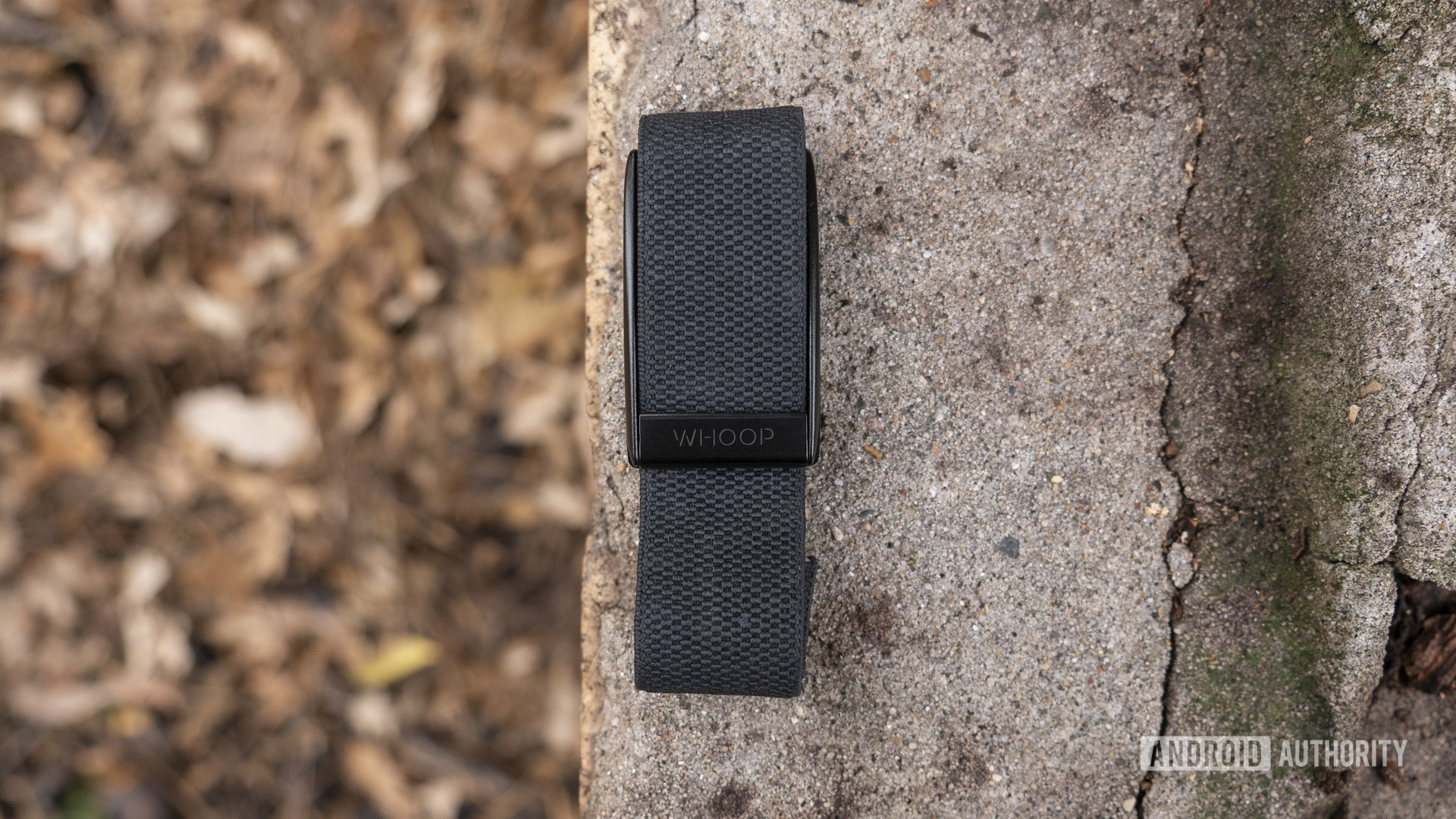
Whether or not the WHOOP Strap 3.0 is right for you will come down to a few things: your willingness to pay a high monthly subscription fee and your willingness to accept the WHOOP Strap for its potentially (extremely) inaccurate data. Those are two major caveats that will stop me from using the device after this WHOOP Strap review. Nevertheless, I’d consider myself more in the “normal user” category and many people looking at this device are not normal users. I mean that in a good way!
For training, recovery, and general sleep tracking, the WHOOP Strap 3.0 is a solid health device worth looking into. It’s truly fascinating to look at all the data WHOOP collects to decide whether or not you should be training or taking it easy.
But while the WHOOP platform has so much potential and introduces many good ideas to the consumer training world, much of that is undercut by the bad heart rate sensor. Add the wonky hardware and expensive platform subscription, and WHOOP is driving a hard bargain.
Furthermore, many users will likely want to wear a primary fitness device that tracks all the things the WHOOP Strap doesn’t, such as steps, distance, pace, etc. Garmin, Suunto, Polar, and even Fitbit to some extent make fantastic wearables that will likely be a better fit for your “main” fitness tracker. The cost of entry, more accurate sensors, and ease of use don’t hurt either.
If you’re still intrigued by the WHOOP Strap 3.0, go ahead and give it a shot. Just be aware of its limitations, because there are plenty.